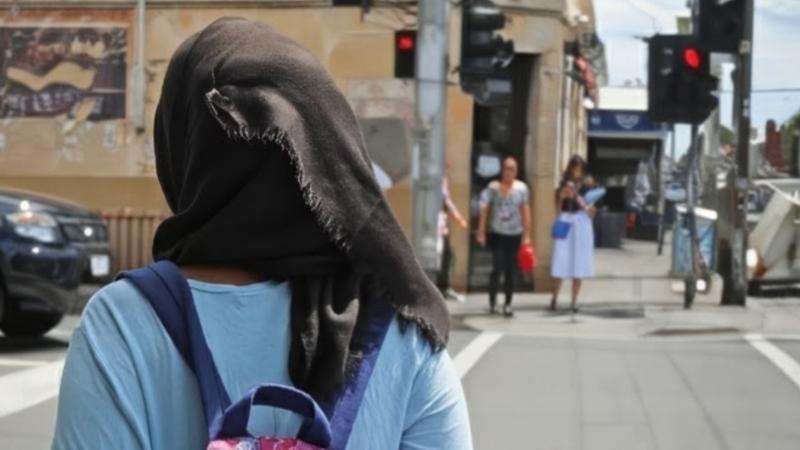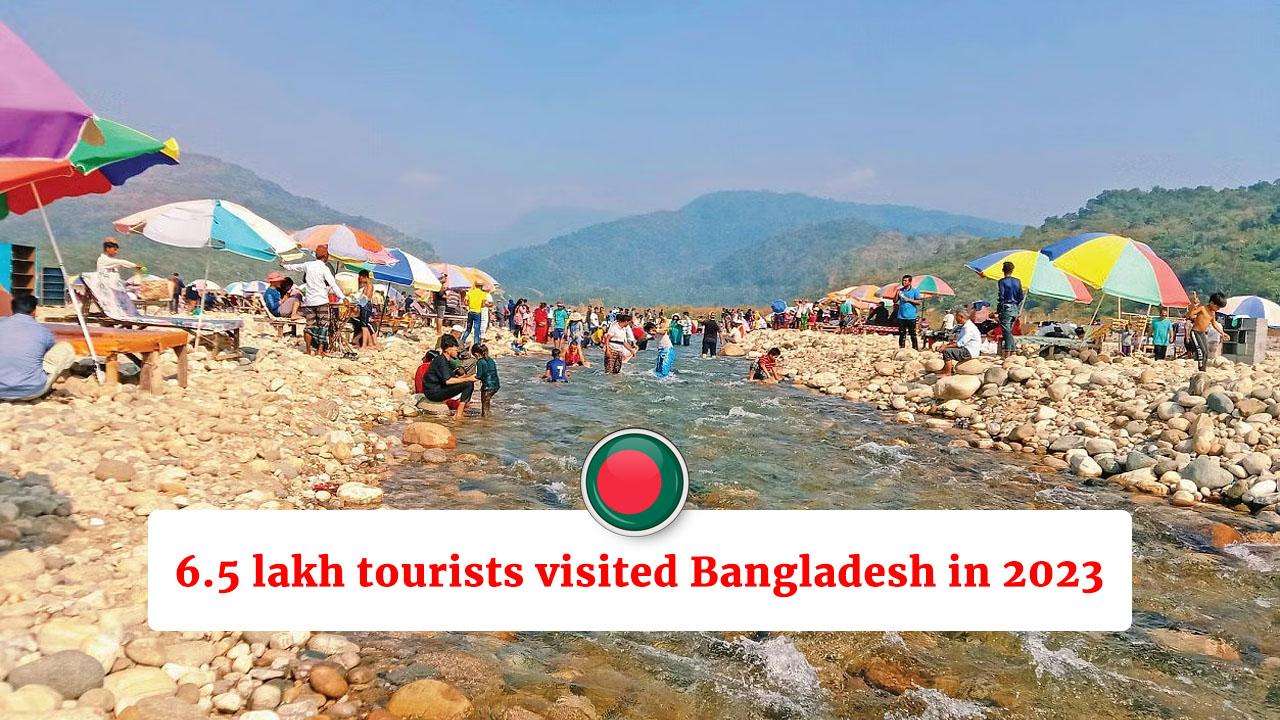The tourism sector of Bangladesh has returned to the pre-Covid 19 period as the country attracted a record 6.5 lakh tourists in 2023 as expat Bangladeshis living in different parts of the world visited the country, sources said.
Out of 650,000 tourists, some 295,000 Indian tourists visited Bangladesh in 2023. However, mostly expats Bangladeshis living in different parts of the world contributed to the promotion of the tourism sector of Bangladesh.
However, some 110,000 expat Bangladeshis living in the USA, some 100,000 Bangladeshis living the UK, some 30,000 expat Bangladeshis living in Canada, 18,000 expat living in Italy, some 5,000 expat Bangladeshis living in Japan, some 5,000 expat living in Germany, some 4,000 expat Bangladeshi living in France and some 4,00 expat Bangladeshis living in Sweden contributed significantly to the tourism sector of Bangladesh in 2023, sources said.
However, the earnings of the inbound tourism sector stood at 439,231 US dollars in 2023, 382,732 US dollars in 2022, 227,962 US dollars in 2021, 178,240 US dollars in 2020, 322,058 US dollars in 2019 and 288,991 US dollar in 2018
Bangladesh attracted some 529,000 tourists in 2022 and the Bangladesh Tourism Board (BTB) has set a tarter of wooing some seven lakh tourists this year.
Meanwhile, Bangladesh has set a target of attracting 10 million tourists and a revenue of 8.00 billion US dollars by 2041 as Prime Minister Sheikh Hasina has set a vision of turning this country into developed one.
Meanwhile, India's inbound tourism sector is experiencing a significant rebound, with foreign tourist arrivals (FTAs) in 2023 surging 64 per cent compared with 2022. This translates to 92,36,108 visitors between January and December 2023, compared with 64,37,467 in the same period of the previous year.
The Maldives welcomed approximately 1.8 million tourists in 2023, reflecting the country's enduring appeal as a premier tourist destination. MATATO highlighted that each tourist contributed an average of USD 467 to the economy, further emphasizing the sector's vital role in driving economic growth.
In 2023, Sri Lanka recorded more than 1.4 million tourists arrived, reflecting a remarkable 106% growth compared to 2022.
Sri Lanka highlighted a substantial increase of 106% in tourist arrivals in 2023 compared to the previous year, 2022.
According to a rough estimate, Sri Lanka is targeting 02 million tourists with an estimated revenue earnings of US $ 06.00 billion in 2024. This year has seen over 700,000 tourists visiting the country,
Meanwhile, the Nepal government has successfully met its target of drawing one million foreign tourists in 2023. The goal was outlined in the budget for the current fiscal year, highlighting the intent to boost the number of international visitors to Nepal.
The country’s tourism, severely impacted by the Covid pandemic, has nearly returned to its pre-pandemic state. According to the National Tourism Board (NTB), there has been an 85 per cent recovery in tourism this year.
In 2023, Bhutan welcomed around 130,000 tourists, Tobgay told CNBC.
Bhutan welcomed 315,599 international visitors in 2019, 73% of whom were from India, according to an annual report published by the Tourism Council of Bhutan.
Bhutan is targeting 300,000 tourist arrivals per year, half of which would be from “third countries” and “dollar-paying visitors,” according to a manifesto from Tobgay’s People’s Democratic Party.
In 2023, Pakistan saw a 115% increase in foreign tourism which has helped the country earn $1.3 billion in foreign exchange revenue.
According to the ‘World Tourism Barometer’ published by the World Tourism Organisation of the United Nations, Pakistan made 92 per cent recovery to pre-pandemic levels in 2023, as the country experienced a 115 per cent surge in tourist arrivals compared to the previous year.
Meanwhile, Bangladesh Tourism Board has prepare a master plan on the country’s tourism sector in cooperation with IPE Global Limited.
IPE Global Limited is an Indian international development consulting group known for providing technical assistance and solutions for development and sustainable growth in developing countries.
Realizing the vast potential and multi-dimensional benefits of tourism, the present government of Bangladesh has laid huge emphasis on developing it as a major economic sector of the country.
Former Chief Executive Officer of Bangladesh Tourism Board (BTB) Javed Ahmed while talking to this correspondent said “The National Tourism Council (NTC), the apex body for tourism headed by Prime Minister Sheikh Hasina, gave a clear instruction to prepare a tourism development master plan. Following this, Bangladesh Tourism Board (BTB), the National Tourism Organization (NTO) under the Ministry of Civil Aviation and Tourism, was given the responsibility to prepare a Tourism Master Plan in the 7th Five Year Plan period. Pursuant to this, BTB proceeded to select a reputed international Tourism Consulting Firm to prepare a short-term, mid-term and long-term Tourism Master Plan.”
With this background an internationally reputed consultancy firm, IPE Global Ltd. was selected through competitive technical bidding process and were mandated to develop the Tourism Master Plan for Bangladesh, the CEO of the Bangladesh Tourism Board said.
The plan was envisaged as a guiding document which shall ensure sustainable development of tourism and which shall provide a blueprint for planned development of the country’s tourism resources. The pandemic struck bringing the process to a halt, right after its initiation in January 2020 but now the master plan has been completed this year, sources said
The master plan team has a wide experience across the globe. The team consist of 5 international and 14 national experts. The international experts are from Scotland, France, Australia, Srilanka and India. The team is leaded by Benajmin Carrey (TL) from Scotland and Prof Dr. Nurul Islam Nazeem (DTL) from University of Dhaka.
The Master plan is divided into three phases. Phase 1 is made up of two reports: The Inception Report and the Situational Analysis Report. The situational analysis consists of three reports, two of which were approved by the Monitoring Committee. During report 2, nearly 50 online and physical meetings with various stakeholders were held, 77 acts and policies were reviewed, 10 policies specific to the tourism sector were also reviewed, and 16 case studies of global comparison (Bhutan, Thailand, Indonesia, Maldives, etc.) with regard to tourism were completed.
The team is conducting extensive site visits and stakeholder consultations across the country for Phase I, Report 3. The team surveyed 1050 tourist destinations, including detailed infrastructure assessments and performance evaluations. The team conducted approximately 250+ accommodation and restaurant surveys, as well as 600 domestic tourist surveys, 100 international surveys, and many tour operators were consulted. The consultation process is still ongoing, and we hope to reach a higher number of people. Along with all of this, nearly 50 online Focus Group Discussions with different districts have been held so far, a divisional workshop in Sylhet and Khulna has been completed, and others are scheduled in the coming weeks. In addition, the team consulted with approximately 1500 public and private stakeholders from across the country. The team has also identified 11 themes for promotion of tourism across the country. The team hopes to submit the report 3 by March 2022.
In phase II, Strategic Tourism Master Plan will be submitted, which will provide VISION & Strategic Direction’s for tourism industry and also a roadmap for implementation of interventions based on short term, medium term and long term targets.
The last phase of the master plan is Phase 3, which has seven deliverables – Regional & Structural Plan, Niche Product Development Plan, Conceptual Architectural Plan, Action Plan, finance & investment plan, Marketing and Promotional Strategy, Draft Tourism Master Plan and Final Tourism Master Plan. The Tourism Master Plan sets a goal of attracting 10 million tourists by 2040, with an annual revenue target of $8 billion. This can be accomplished by a significant shift in government planning and coordination, strict exclusive (and exclusionary) zoning, visa policy liberalization, massive incentivization of foreign investment etc. The team is working on developing models and scenarios to see if the given goals can be met in a long-term model in a sustainable manner. The plan will also concentrate on the ten Development Project Proposals (DPPs), one of which will be a Design and Plan for an Iconic Built Attraction in the capital city or any suitable location.
“The objective of the plan is to develop new products like rural and community-based tourism, pro poor tourism and provide a much needed framework within which synergistic and sound interventions can be made within a futuristic planning perspective”, said project coordinator of the tourism master plan Sakshi Godara.
Momentum seems to be picking up and enthusiasm is returning within the Master Plan team and in the tourism industry generally, as swift progress is being reported in the activities of the project. Industry and Private tourism enterprises are optimistic that this plan will bring in some structural reforms which will result in meaningful changes in the way tourism is administered in the country. This might just be the impetus that Bangladesh needs in order to emerge as a welcoming and sustainable tourism destination with a global appeal
Sakshi Godara, the consultant of the project, said sanitation, safety and security and promotion of tourism zones are important in the sector.
Benjamin Carey, a Scottish citizen and team leader of the project, gave an overview of the tourism sector of Bangladesh at the workshop.
Bengamin Carey, team leader of Preparation for Tourism Master Plan for Bangladesh, Bangladesh should target regional tourists to boost the tourism sector
He said political will of South Asian leaders is important in context of easing and relaxing visa process in promoting the tourism sector.
He said time has come to introduce on arrival visas to tourists of South Asian countries.
Bengamin Carey, a Scottish citizen, said Bangladesh should target tourists of Seven Sister States of India —Arunachal Pradesh, Assam, Meghalaya, Manipur, Mizoram, Nagaland.
He, however, said less integration and distrust are also barriers to the promotion in the South Asia.
He has expressed the hope that contribution of the tourism sector to the gross Domestic product (GDP) will be around 10 per cent which is now only 3 per cent of GDP.
Given tourism’s position as a top export sector and creator of employment, UNWTO advocates the need for responsible growth. Tourism has, therefore, a place at the heart of global development policies, and the opportunity to gain further political recognition and make a real impact as the Decade of Action gets underway, leaving just ten years to fulfill the 2030 Agenda and its 17 Sustainable Development Goals.
Bengamin Carey said tourism sector will be one of the important revenue generating sectors in Bangladesh.
The year 2019 saw a new record for international tourist numbers, with 1.5 billion arrivals recorded, according to the United Nations World Tourism Organization (UNWTO)
He said the number of international tourists in South Asia is still low compared with rest of the global tourists.
_5.jpg)

_6.jpg)





.svg)


